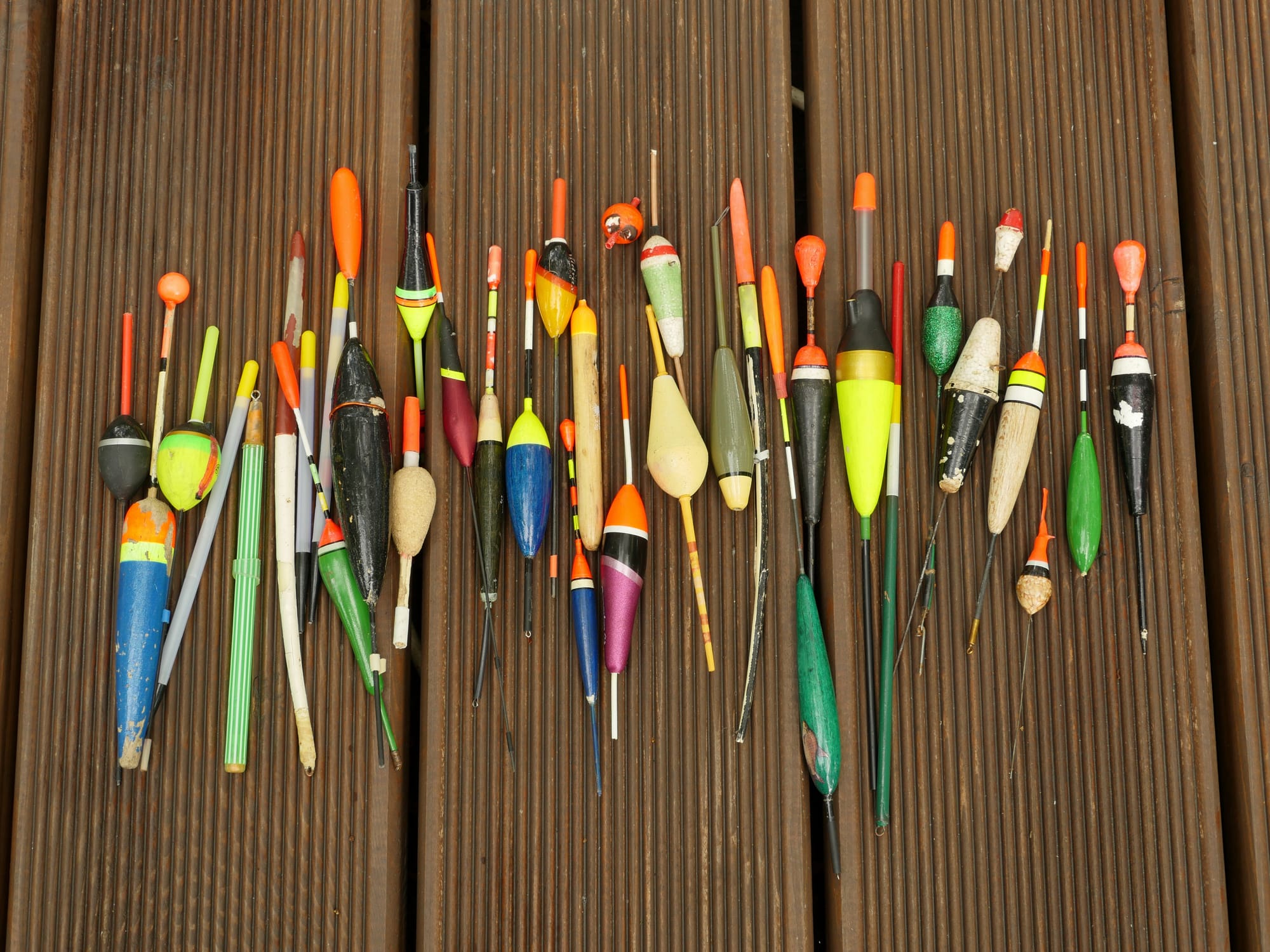Exploring the Charm of Vintage Fishing Floats

Exploring the charm of vintage fishing floats unveils a fascinating aspect of fishing history intertwined with a rich cultural and artistic heritage. These humble yet significant tools have transcended their functional origins to become sought-after collectibles, offering unique insight into a bygone era. Whether you are a collector, an angler, or simply curious about maritime artifacts, delving into the world of vintage fishing floats can be both educational and deeply rewarding. Let’s explore this fascinating subject through a series of points and tips, shedding light on why vintage fishing floats are worth your attention and admiration.
1. What Are Vintage Fishing Floats?
Vintage fishing floats are buoys or markers traditionally used by fishermen to keep fishing nets, lines, and traps afloat and visible. These floats were typically made from materials like glass, wood, or cork, depending on the era and region of their origin. While modern fishing relies on plastic alternatives, vintage fishing floats were handcrafted with remarkable attention to detail, often reflecting the regional fishing customs and practices of their time.
2. History and Evolution of Fishing Floats
The history of fishing floats dates back centuries, with their earliest origins likely tracing to ancient fishing communities around the world. Early floats were primarily constructed from natural materials like hollow reeds or carved wooden pieces. By the 19th century, glass floats were introduced, initially in Norway and later widely adopted across Europe, the United States, and Japan. These glass floats are especially beloved today for their durability and aesthetic appeal.
Over time, advances in materials and manufacturing led to a decline in the production of glass and wooden floats as fishermen embraced the practicality of lightweight, mass-produced plastics. However, original vintage fishing floats are now admired for their craftsmanship and historical significance, becoming cherished items for collectors and enthusiasts.
3. The Artistic and Visual Appeal of Glass Floats
Among the variety of vintage fishing floats, glass floats hold a special place for their inherent beauty. Hand-blown using traditional glassmaking techniques, these floats often come in shades of blue, green, clear, amber, and sometimes more vibrant hues. Many glass floats feature small air bubbles trapped within, adding to their uniqueness and charm. Some even bear embossed markings or stamps of their makers, further enhancing their collectible value.
When displayed in a home, garden, or as part of maritime-themed decor, glass floats exude a rustic yet elegant charm. Their ability to catch light and reflect soft glows in various settings makes them a favorite among decorators and collectors alike.
4. Identifying Authentic Vintage Floats
As with any collectible item, distinguishing authentic vintage fishing floats from modern reproductions is crucial for serious collectors. Here are some tips to identify genuine pieces:
- Examine the material: Authentic vintage floats often have minor imperfections, such as bubbles, uneven surfaces, or slight color variations due to the older manufacturing processes.
- Look for maker’s marks: Many glass floats were stamped or embossed with unique symbols, letters, or numbers to indicate their country of origin or the manufacturer.
- Inspect wear and tear: Since these floats were used in harsh maritime environments, authentic ones may show signs of wear, such as scratches, chips, or a weathered surface.
- Check the age: Research the history of specific markings or models to ensure the item dates back to the appropriate time period.
- Seek expert advice: Consult online forums, books, or collectible communities to confirm the authenticity of a float.
5. The Intrigue of Japanese Glass Floats
One of the most celebrated categories of vintage fishing floats comes from Japan. Japanese glass floats, introduced in the early 20th century, are admired for their exquisite craftsmanship and cultural significance. These floats were used for decades in the fishing industry before finding their way onto shores worldwide, carried by ocean currents and waves. Their resilience and seamless beauty have made them a favorite among collectors globally.
Many Japanese glass floats feature kanji symbols, distinctive net patterns, or unique colors, making each piece special. The mystique of these floats, often discovered washed up on beaches, continues to lend them an air of wonder and adventure.
6. Why Collect Vintage Fishing Floats?
There are several reasons why vintage fishing floats appeal to collectors and casual enthusiasts:
- Historic Value: Each float tells a story of its maritime history and the fishermen who used it.
- Rarity: Many vintage floats are no longer manufactured, making them rare and highly desirable.
- Aesthetic Appeal: The beautiful colors, shapes, and textures of these floats make them perfect for home decor or artistic displays.
- Connection to Nature: For beachcombers, finding a float washed ashore offers an exciting connection to the natural elements of the ocean.
- Investment Potential: Some vintage floats, especially rare Japanese examples, have increased in value over time.
7. Top Tips for Displaying Vintage Fishing Floats
If you own vintage fishing floats, the way you display them can enhance their charm and showcase their history. Here are some creative ideas:
- In baskets or bowls: Place multiple floats in a decorative basket or bowl for a casual, maritime-inspired centerpiece.
- Along windowsills: Glass floats capture and refract sunlight beautifully, making window ledges an ideal display location.
- Outdoor accents: Use them in gardens, patios, or outdoor living spaces to create a rustic nautical vibe.
- Grouped by color: Arrange your floats by color or size to create themed displays.
- Hanging as ornaments: Use old fishing nets, ropes, or wires to hang your floats, emphasizing their original purpose and evoking a maritime ambiance.
8. The Thrill of Finding Vintage Floats
One of the most exciting aspects of vintage fishing floats is the thrill of finding them on beaches or in antique shops. Beachcombing for vintage floats often feels like a treasure hunt, especially in coastal areas known for their fishing history. Some enthusiasts dedicate hours exploring shorelines, searching for remnants carried by the tides. Others enjoy sifting through flea markets, maritime auctions, or online platforms to find unique and rare float designs.
9. Caring for Vintage Floats
Preserving the condition of vintage fishing floats is essential to maintain their beauty and historical value. Follow these care tips to keep them in pristine condition:
- Clean gently: Use a soft cloth and mild soapy water to clean glass or wooden floats, avoiding harsh cleaning agents that could damage their surface.
- Avoid direct sunlight: Prolonged exposure to sunlight can cause discoloration, so place your floats in shaded areas indoors or outside.
- Protect fragile items: Handle glass floats carefully to avoid dropping or chipping them.
- Store properly: If not on display, wrap floats individually in soft cloth or paper to prevent scratches during storage.
- Repair with caution: If a float is damaged, consult an expert before attempting to repair it yourself to ensure its authenticity and value are not compromised.
10. Embracing the Nostalgia of Vintage Fishing Floats
Ultimately, the charm of vintage fishing floats lies in their ability to connect us to the past. For fishermen, they represent a nostalgic nod to earlier life at sea, while for collectors and enthusiasts, they embody a tangible link to unique craftsmanship and cultural traditions. Whether you are beachcombing for a float carried across oceans or admiring a handcrafted glass piece in your home, vintage fishing floats invite you to appreciate their enduring beauty, history, and stories.
Exploring the world of vintage fishing floats is a journey into maritime history, artistry, and nostalgia. From the intricate designs of Japanese glass floats to the rustic appeal of wooden and cork varieties, these small, functional artifacts possess a timeless allure. As collectibles, they provide both tangible and sentimental value, making them an excellent addition to any collection or decor. So, immerse yourself in this captivating world—vintage fishing floats are more than just fishing gear; they are pieces of history waiting to be rediscovered and cherished.


